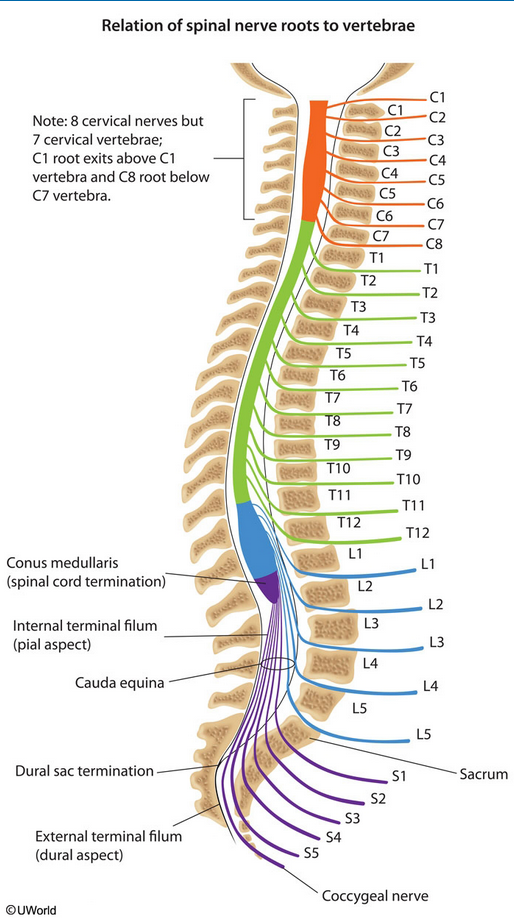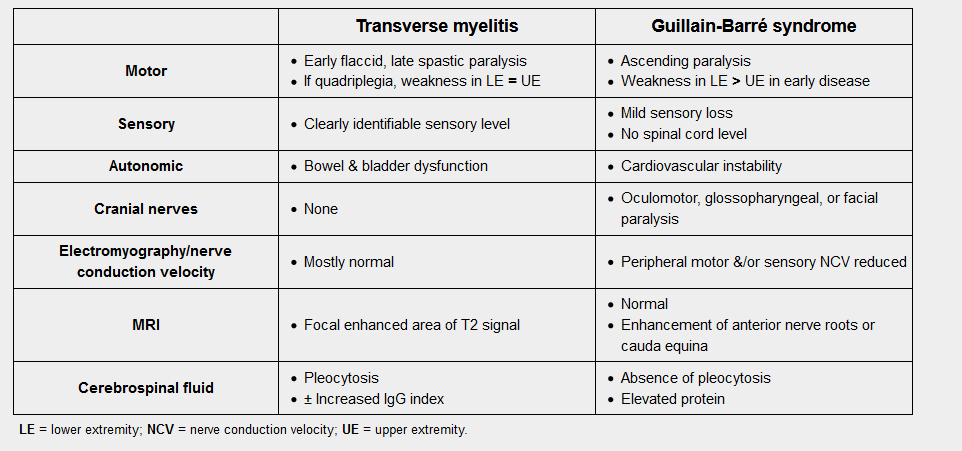cauda equina syndrome
- related: Neurology, transverse mylelitis
- tags: #neurology

Cauda equina syndrome affects the lumbosacral roots as they exit the spinal cord and is usually caused by a herniated disk or tumor. Clinically, patients will present with severe unilateral pain in the saddle region that radiates down to the legs with associated asymmetrical lower-extremity weakness (proximal and distal). The presence of significant bowel/bladder/sphincter symptoms clinically distinguishes cauda equina syndrome from Guillain-Barré syndrome (GBS); the presence of severe shooting (lancinating) pain distinguishes it from TM.
